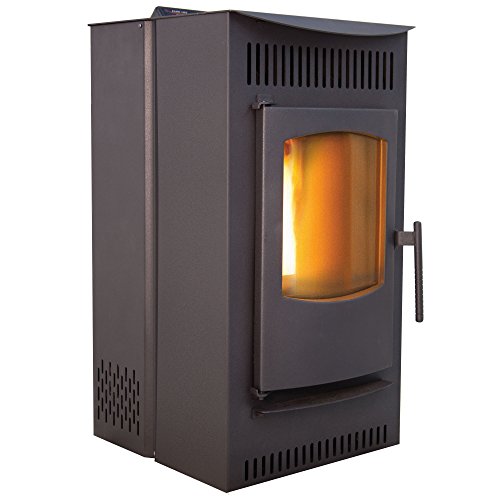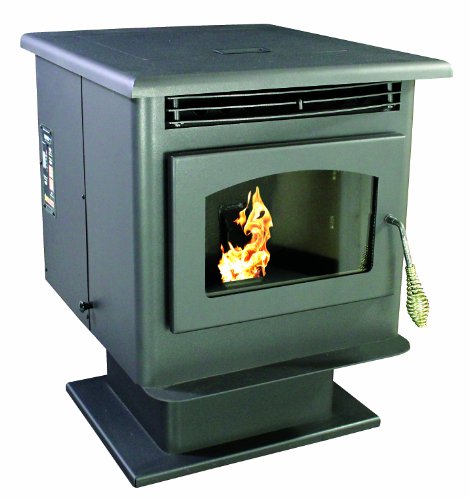Choosing Between a
Wood and Pellet StoveWood and pellet stoves come in a range of styles that fit into existing fireplaces. They look stylish and can provide warmth to homes.
Pellet stoves burn compressed wood wastes like shavings and sawdust to create hot air. A fan is used to push exhaust gases through a specially designed venting systems.
Cost
When looking at wood heat stoves versus pellet stoves, the cost is a major determinant. Pellet stoves are more expensive initially than their counterparts. However they are also much less expensive when compared to home electric or fossil fuel sources. In addition, the savings over time that can be realized through the less dependence on a central heating system can offset the initial investment.
Pellet stoves burn compressed pellet fuels such as timothy or alfalfa inside an enclosed combustion chamber. These pellets resemble wood and contain more heat per pound than cordwood and they burn more hot to produce more BTUs per hour.
pellet stove dealers near me fuel can be purchased in bulk, which decreases the time needed to refill the stove's hopper.
A major benefit of pellet stoves is that it operates automatically. The stove will keep the temperature you set on the thermostat. This saves you from having to keep adding fuel to your fire and prevents massive temperature swings in your home, which can happen when you use a wood stove.
The pellet stove requires less maintenance than a wood burning stove. A wood stove must be maintained regularly to avoid creosote buildup, but pellet stoves produce very little and only require regular cleaning of the chimney vent to ensure maximum performance.
Initial expenses for pellet stoves are typically more expensive than wood heat stoves, but the energy savings they can provide can offset these expenses over time. A pellet stove requires power to put pellets into the combustion chamber. This could be an issue in the event of an outage in power. However battery backup systems are in place to reduce the danger.

When properly maintained, wood heat stoves as well as pellet stoves are safe to use. To ensure the safety of your stove, you should always follow manufacturer instructions for operation and maintenance. This includes removing unburned pellets from the stove's hopper and feed system at the conclusion of each heating season, and sweeping the vents for the flue regularly to prevent the build-up of soot.
Energy Efficiency
A wood or pellet stove is a fantastic choice for a home because they generate heat at a far more affordable cost than gas or oil heaters. They can also be utilized to create a warm atmosphere and also as an alternative heating method such as the furnace or fireplace. If you're looking for a new stove it is crucial to select the right type to meet your needs and budget.
Pellet stoves are rectangular in design and feature combustion chambers, a fan, hopper, and vent to vent gases from combustion. They can be self-lighting, and they include a thermostat to allow you to control the temperature inside your home. They can be used to heat
small pellet stove or large houses based on their wattage and capacity to generate enough heat per hour.
There are a variety of pellet fuel are available that include nutshells, wood, grain, and other products from cardboard and paper. Depending on the kind of pellet you select, you'll have to consider whether it's burning properly or produce too much ash. The highest quality pellets will have a high energy density, which means they'll produce more heat than cheaper brands.
Like a wood stove a pellet stove is powered by electricity that is used to run fans and augers that deliver the pellets into the combustion chamber. You might want to install an emergency generator or backup system to ensure you can generate heat in the event of a power interruption. Pellet stoves are usually more efficient than wood stoves since they don't need as much air to burn and produce less ash and creosote.

Both pellet and wood stoves require some maintenance however wood stoves generally require more attention than
pellet stove stores near me stoves. You'll need to regularly get rid of the accumulation of "clinker" and ash from the bottom of your stove. You should use a steel vacuum cleaner with a flexible hose to get rid of the hot material. It is also possible to replace the fire screen on your stove at least once per year, depending on the type you buy.
Environmental Impact
Wood-burning stoves emit massive amounts of air pollutants such as nitrogen oxides volatile organic compounds (furans and dioxins), and volatile organic substances. These emissions also contribute to fine particle pollution which could be harmful to health. The burning of wood also generates creosote. This toxic and carcinogenic substance can build up in the flue and cause house fires. Wood pellets, on other hand, create less air pollution, and they do not produce creosote and require a smaller space for storage than logs.
Pellet stoves also require more care than log fireplaces. They need to be inspected by both the homeowner and a professional each year to ensure that they are operating correctly. They also use electricity to run fans and controls as well as pellet feeders. In normal use, a pellet stove consumes about 100 kilowatt-hours per month. The stove will not operate if the power goes off, unless there is an emergency battery backup.
The efficiency of energy and environmental impact of a wood or pellet stove is contingent on the species size, moisture content and size of the wood used. Wood pellets made of dense hardwoods, such as oak and hickory produce more heat pound for pounds than pellets made from softwoods like pine or spruce. The heat-to-weight ratio of different species is also important.
The initial cost of a stove constructed of pellets is lower than a wood stove. However, it still must be replaced after 10 to 15 years. Most manufacturers suggest removing all pellets that are not used from the stove hopper and feed system at the close of the heating season, which will help to prevent rusting and make lighting the appliance at the beginning of the next heating season easier. It is also recommended that the flue vent be regularly cleaned to prevent soot buildup.
The results of this study, while the pellet stove performed better in the majority of impact categories than the fireplace or spruce log burner, are specific to the appliances and conditions under the conditions they were operating. Further research will be needed to assess the performance of various wood-based heating systems in homes from a cradle-to-grave standpoint including the management of forests wood split and pellet log production, storage and transport and thermal energy generation.
Maintenance
Wood and pellet stoves require regular maintenance to keep the combustion process functioning smoothly and efficiently. A weekly cleaning is necessary to get rid of ash and other debris. They also need to be cleaned out of their ash pans as well as the vent pipes regularly. Being on top of these requirements helps to prevent build-up of creosote, which can cause the stove to malfunction.
Before each season, a professional technician should clean and inspect the pellet stove. This can help identify and resolve any mechanical problems before they become more serious. The technician should also clean and inspect venting system in order to ensure proper operation. The technician should also clean any clogged or oiled parts and lubricate the fans.
pellet stoves on sale stoves require more maintenance than wood stoves due to the fact that they are more complex. The controls, the blower and hopper require electricity. In addition, they need to be connected to an exhaust pipe, which could be a tiny chimney on the roof or an exhaust pipe directly through the wall behind the stove.